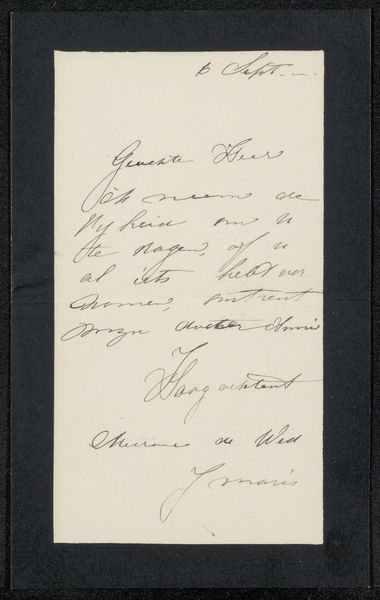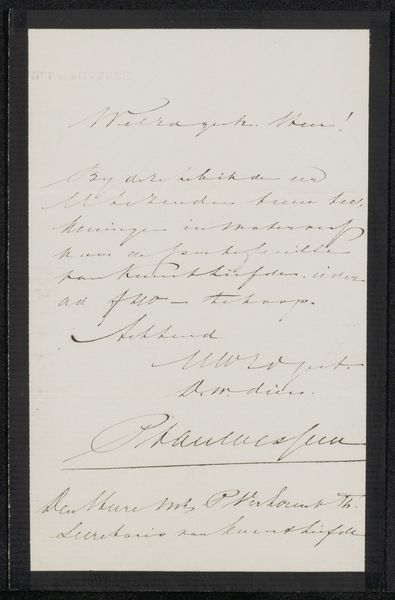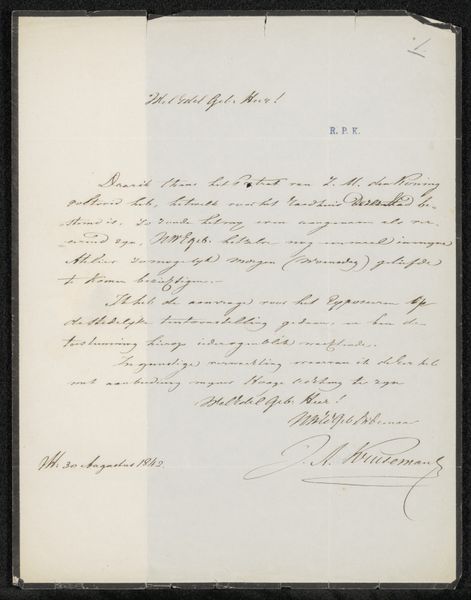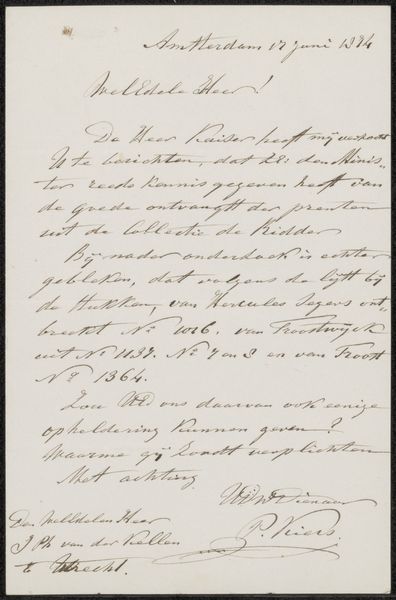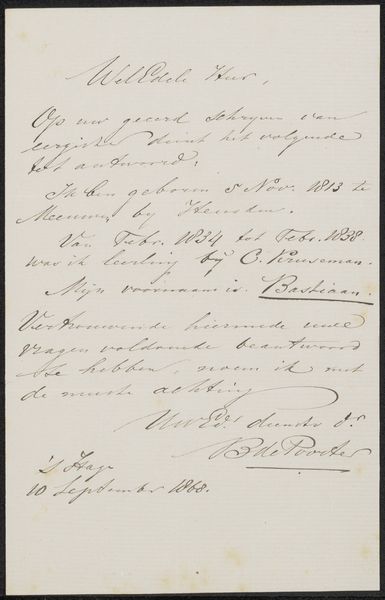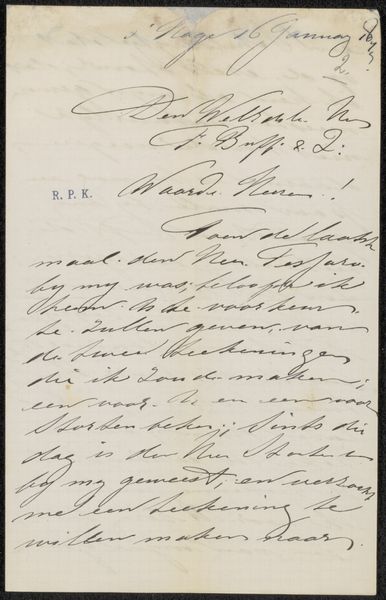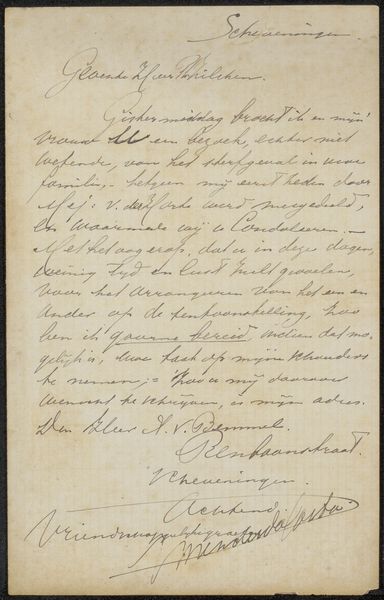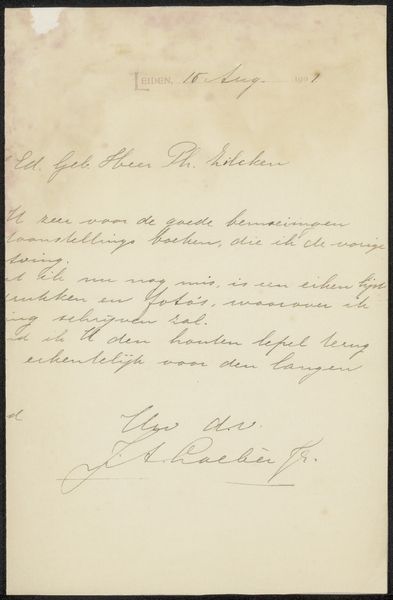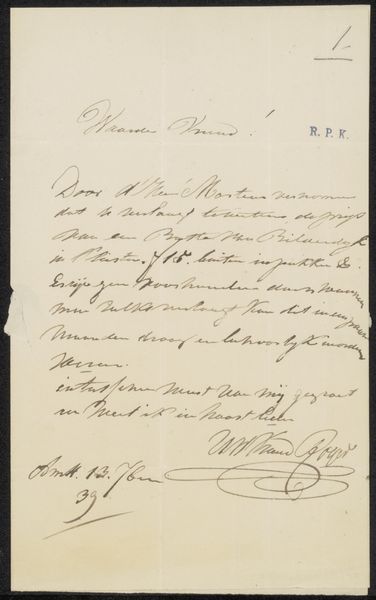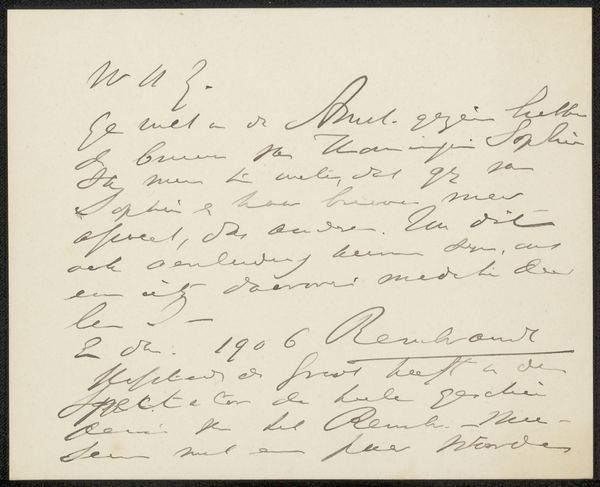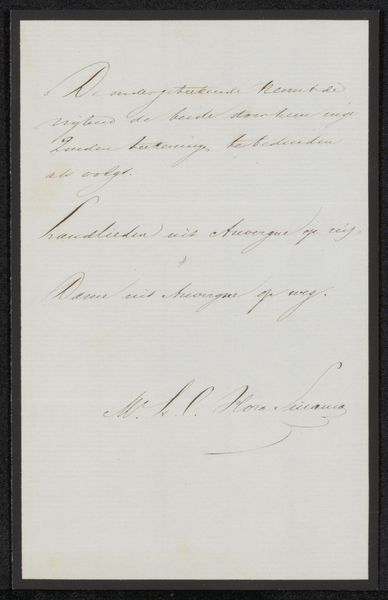
Copyright: Rijks Museum: Open Domain
Curator: What a wonderfully intimate piece! Before us, we have “Brief aan Philip Zilcken,” a work created by Mary Cassatt sometime before 1896. It's currently held here at the Rijksmuseum. As an etching in ink, it offers a fascinating glimpse into Cassatt’s correspondence. Editor: It's immediately striking—the controlled chaos of the handwriting across the page. The composition feels very organic, as if the words are blossoming across the paper rather than being rigidly placed. There is a definite rhythm to the strokes. Curator: Indeed. Cassatt was a master of portraying inner thoughts and connections through her work. This letter serves as a visual echo of the social circles she moved in, both personally and professionally, highlighting the cultural landscape she navigated. The handwriting, looping and elegant, embodies an emotional expression, conveying admiration. Editor: The density of the ink is intriguing; there are varying levels of darkness creating focal points within the overall texture of the letter. Note how the heavier inking defines Cassatt's signature, effectively highlighting her authorial presence. She directs our attention structurally as much as expressively. Curator: Precisely! It's a declaration, marking a creative dialogue—not only with Philip Zilcken, to whom the letter is addressed—but with a whole network of artists and intellectuals. Look at how the script hints at immediacy; we sense the urgency and flow of ideas in the strokes. Letters at the time served as essential vessels for cultural memory. Editor: And consider the physical texture! Though we view it now behind glass, imagining the texture of the paper, the press of the pen... that interplay gives a sense of dimension, making the inscription come alive. The composition of a blank paper, densely filled with cursive gestures creates meaning far beyond semantics. Curator: I completely agree! It exemplifies Cassatt’s unique vision—making the personal universal, revealing the depth of human connection through the visual echoes of correspondence. Editor: Absolutely. It allows for a new appreciation, doesn’t it? Viewing such a functional object transformed into an artwork through the deliberate gestures of its creation.
Comments
No comments
Be the first to comment and join the conversation on the ultimate creative platform.
